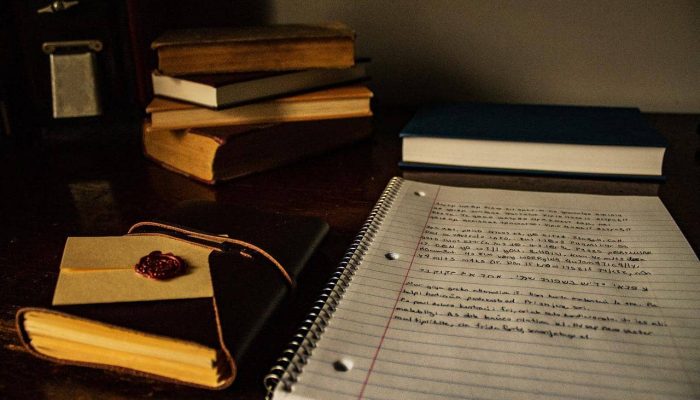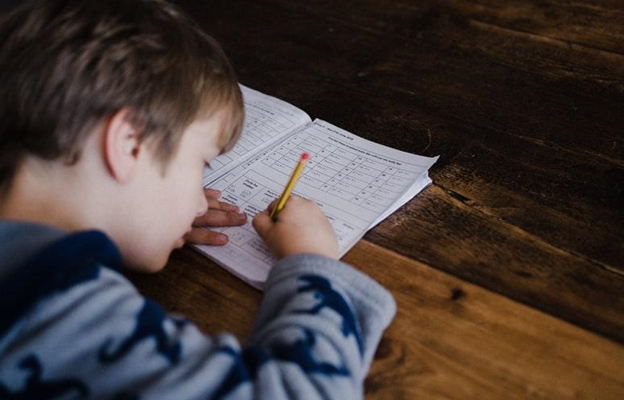Dante Alighieri was an Italian poet. Inferno is the first part of Alighieri’s epic poem Divine Comedy. It is followed by Purgatorio and Paradiso. The Inferno explains the journey of Dante through Hell and is a long narrative poem in the Italian language. The poem has generally three parts, and the narrative describes Dante’s journey through the three realms. They are namely, Inferno, Purgatorio, and Paradiso. Virgil who was an ancient Roman poet from the time of Augustus, guided Dante. Moreover, he also accompanied Dante through the journey.
Dante’s Inferno 9 Circles of Hell Overview
In Dante’s Inferno 9 Circles of Hell, the nine circles of Hell are described in the first part of the poem.
In the whole poem, each circle represents sin and the Punishment deserved by one who commits the sins.
However, the circles include two parts, the upper Hell and the lower Hell. The first sin is self-indulgence like Gluttony, Lust, Greed, and Wrath. The two to five circles are indeed for the upper Hell. Specifically, circle seven is for violence, and circles eight and nine are for fraud.
Dante added circle one in Limbo and circle six for heresy.
Dante’s Inferno 9 Circles of Hell: Punishment Names
The first circle of Hell: Limbo
According to Dante’s Inferno 9 Circles of Hell, Dante, along with Virgil, arrives at Limbo, at the first circle of Hell, where Virgil himself resides. They had to cross the river Atcher on a boat to reach the first circle of the abyss, Limbo.
However, the first circle contains people who did not accept Christ. Limbo is filled with unbaptized virtuous pagans and people. When Dante asks if anyone had ever left Limbo, Virgil states that he saw Jesus descend into Limbo. Moreover he had seen taking Adam, David, Abel, Moses, Noah, Abraham, and Rachel into his all-forgiving arms. Thus, he transported them to Heaven.
According to Dante’s Inferno 9 Circles of Hell, public figures like Aristotle, Julius Caesar, Hippocrates, Cicero, and Socrates reside here. Although people are not tortured, there is the presence of gloominess and sadness. People’s souls in Limbo are unhappy. Although Heaven is near, they won’t be able to enter.
Located in Cantos: 4
The second circle of Hell: Lust
According to Dante’s Inferno 9 Circles of Hell, Lust, the second circle of Hell, exceeds Limbo. People, who were driven by Lust, suffer from torment here.
In Dante’s Inferno 9 Circles of Hell, Dante says that strong violent wind blows in the second circle of Hell. The fierce wind drags and beats the tormenting souls on the rocks and mountains. It symbolises the supremacy of Lust over the people which drive them to satisfy their never quenching thirst.
However, Dante sees many adulterous people such as Cleopatra, Dido, Helen of Troy Tristan, Semiramis, and many more over here. Dante considers Lust a less heinous crime, as it involves more mutual indulgence rather than being self-centred. Not to mention, this could be a reason why Lust is the second circle. Terrible winds of a violent storm buffeted the souls back and forth, without rest. The ruined slope in this circle is thought to reference the earthquake that occurred after the death of Christ.
Read Also: What does a Medical Scientist do?
Identically this is the first circle where the proper punishments of Hell proper begin. Minos sentences each soul to its torment by wrapping his tail around himself. It is done a corresponding number of times. Virgil rebukes Minos, and he and Dante continue.
Located In Canto: 5
The third circle of Hell: Gluttony
In the third circle, the souls of those who indulged in voracious feasting and appetite are tortured.
Putrefying modern living filled the whole landscape. Just as Lust has revealed its true colors in the winds of the previous circle, here the slush explains the true nature of sensuality. In fact, the icy and violent storm punishes souls which hold foul decaying sludge and mud onto them. The Storm also rained human wastes and worms upon them. They forced them to gurgle around in the solid waste and soil.
However, the monstrous dog beasts with three heads also existed in this circle. The souls are tormented not only for their overindulged excessive eating and drinking. But also for their other addictions. However, Virgil obtains safe passage past the monster by filling its three mouths with mud.
According to Dante’s Inferno 9 Circles of Hell, Dante converses with a Florentine contemporary identified as Ciacco, which means hog. Further, a character with the same nickname later appears in The Decameron of Giovanni Boccaccio.
Located In Canto: 6
The fourth circle of Hell: Greed
The person who condemns the sin of greed is explicitly punished in the fourth circle of Hell.
They use great weights as a weapon and force it with their chests which symbolize their selfishness during their lifetime.
However, the circle is divided into two groups of people, who spent lavishly and those who hoarded for tremendous and imperial possession which is irrelevant. According to Dante, those condemned to the fourth circle spend eternity fighting over money and valuables.
Plutus the God of wealth guards the inner circle of greed. It includes Cardinals, clergy members, and the Popes who accumulated possession and wasteful extravagance and foolishly misused others’ money for their benefits. It refers to people as if they lost their souls and carry a massive weight on their chest. However, they choose to suffer to attain higher possession. Consequently, the greed indulgence of two parties has lured them into the self-pity of misery and lies which is never enough to suffice their appetite for never-ending greed. Harding and squandering have led to the indifference to come to mutual antagonism.
Located in Canto: 8
The Fifth Circle of Hell: Wrath
The fifth circle of Hell is present in the stinking decaying of the Styx River.
In this circle the souls who live their entire life wrathfully. According to the poem, Dante along with Virgil searches for the souls to fight each other furiously on the surface of the Styx River. Depending on the security of their wrathful actions, they sink in the river water. Not to mention it reflects the type of sins they committed in their life. However, people who indulged in the silence saw a lie just below the surface.
The souls struggle and fight each other for an entire eternity. They choke each other and stop each other from expressing anything or even speaking. The act signifies their anger which when told, would harm other people. Dante mentioned that this circle’s wrathful and angry souls spend eternity waging battle on the River of Styx.
Located In Cantos:
7-8, 8-9
The Sixth Circle of Hell: Heresy
The sixth circle of Hell marks the beginning of lower Hell. They torture souls in successive processes, who committed heinous crimes.
However, the circle punishes souls in a severely tortured climate. They trapped the souls of people, who denied the cores of Christianity in flaming hot tombs. Here Dante saw other notable historical figures including the ancient Greek philosopher Epicurus, Holy Roman Emperor Frederick II, and Pope Anastasius II.
Located In Canto: 9-10
The Seventh Circle of Hell: Violence
Consequently, the souls of people who indulge in violence are punished and tortured in the seventh circle of Hell.
Dante further divided this circle into three rings. They send souls to suffer in the circles depending on the severity of their violence. If the guilty try to rise out of the blood more than they are limited to, Centaur, who is guarding them will shoot them.
The first ring of the seventh circle of Hell
The first ring tortured the souls of people who were violent against their neighbours. Therefore, this ring engaged in violent crimes against their fellow man, including murder and war. They submerge souls in a river of boiling blood. Centaurs shoot them if they rise too high out of the river.
The second ring of the seventh circle of Hell
The second ring torments the souls of people who were violent towards themselves. The ring transforms souls that attempted or committed suicide into gnarled, thorny trees and then fed upon by Harpies. However, the Punishment symbolized self-hatred which dried them up. Thus, it turned them into dead trees. They have no energy but are exposed to cuts and bleeding just like they did once in their lifetime.
The third ring of the seventh circle of Hell
The third ring has souls of people who showed violence against Nature, God, or Art. People who committed crimes like sodomy, blasphemy, bestiality and the unfair money lenders are being tormented. However, the whole landscape depicts the tragic end of sodom and Gomorrah. Scorching hot sand covered the entire place and flakes of flames fell from the sky. Moreover, Dante mentions seeing the blasphemers lying on the burning sand. Also he has seen the sodomites running in circles on the sand in the poem.
The Eighth Circle of Hell: Fraud
The eighth circle of Hell is Mailbuch, meaning evil ditches. Dante divided this circle into ten trenches or Bolgia.
Bolgia 1
In the first Bolgia, demons torture panderers or sex workers and seducers. Demons whipped them for eternity. They exploited others by seducing them to fulfil their interests. However, in the group of panderers, the poets notice Venedico Caccianemico, a Bolognese Guelph who sold his sister Ghisola to the Marchese D’Este.
Bolgia 2
Now, in the second Bolgia, demons tortured flatters who exaggeratedly complimented others to gain their attention and corrupt them.
Bolgia 3
However, in the third Bolgia, simoniacs who sold the church’s roles and offices were punished. Further, in the poem, Dante sees pope Nicholas III as being a corrupt pope.
Bolgia 4
Now, in the fourth Bolgia, demons tormented sorcerers such as diviners, fortune tellers, astrologers and other false prophets. Consequently, the fortune-teller had their heads twisted backwards as they wanted to see the future using black magic. They desire to see what light ahead caused their damnation. They bound the sinners to walk back and their tears blinded them for eternity.
Bolgia 5
However, in the fifth Bolgia, demons tormented politicians who sold their public offices for money. Demons dunk them in Boeing pitch for indulging in corruption and betraying their country. Further, in the poem, Dante mentions a Claude demon called Malibranch who would tear them apart if they tried to come above the surface of the pitch.
Bolgia 6
Now, in the sixth Bolgia, Dante saw all the hypocrites, who built false statistics in society. Demons force them to climb a mountain with heavily leaden robes which would weigh them down.
Bolgia 7
However, in the seventh Bolgia, Dante saw daemons punishing and tormenting all the thieves in a vast pit filled with snakes, lizards and other reptiles which would bite them. They curl around their hands, legs, back and neck.
Bolgia 8
Now, in the eighth Bolgia, Dante saw the councillors of deception and fraud. Flames cover the fraudulent advisors and evil councillors individually. Consequently, they punished them for their false advisory and pieces of advice to conduct fraud or scam.
Bolgia 9
However, in the ninth Bolgia, Dante saw people who separated religion to form their faith. Demons mutilate them for their sins for eternity.
Bolgia 10
Now, in the tenth Bolgia, they tortured the falsifiers. They subjected Alchemists, counterfeits, impersonators, perjuries and others to terrible diseases, filth, thirst, disguising outer, screaming and darkness.
The Ninth Circle of Hell:
Dante mentioned the last Ninth Circle of Hell as “Coccidius” which is a frozen lake. It also has the centre of Hell where Satan resides. There they freeze the souls in the death of the lake depending on the type and severity of their sins. Meanwhile, they buried souls deeper who committed a more severe crime or sin.Read Also: Penguins – Everything you would like to know about their lifestyle
Dante further divided the ninth circle of Hell into 4 Rounds according to the seriousness of the sin.
First Round of the ninth circle of Hell: Caina
Dante named the first round of the ninth circle Caina, after Kane who murdered his brother Abel. However, here souls of people who betrayed their own family and kids, are freezing for eternity. Their neck and head are above the eyes so that they could bow and protect themselves from the biting winds.
Second Round of the ninth circle of Hell: Antenora
Dante named the second round of the ninth circle Antenora, after Antoner. He was a soldier from Troy, who cheated his city on the Greeks. However, here they punished souls who betrayed their own country.
Third Round of the ninth circle of Hell: Ptolomea
Dante named the third round of the ninth circle Ptolomea after Ptolemy. He called his father in law along with his sons for a treat and killed them. Here demons punish traitors who betrayed their guests.
Fourth Round of the ninth circle of Hell: Judecca
Dante named the fourth circle of Hell Judecca named after Judas Iscariot. Demons freeze the traitors, who are against God in an immobile and distorted ice statue. There is complete silence in this round.
Finally, according to Dante’s Inferno 9 Circles of Hell, after crossing Judecca comes the centre of Hell where Satan resides. However, here demons punish people, who committed the absolute sin of treason against god. God trapped Satan in the frozen central zone in the ninth circle of Hell. Also Lucifer, the archangel who betrayed God is trapped waist-deep in the ice.




